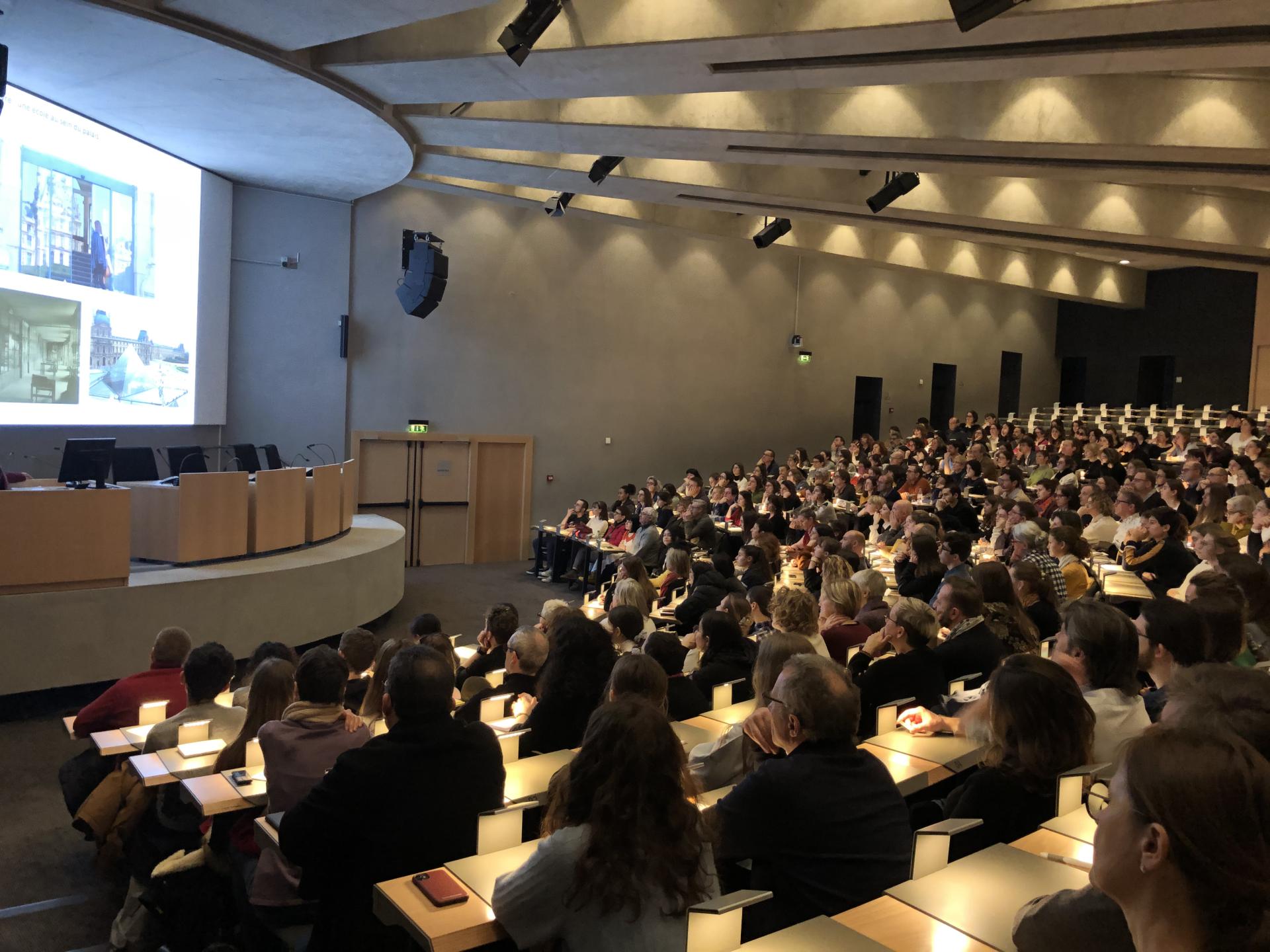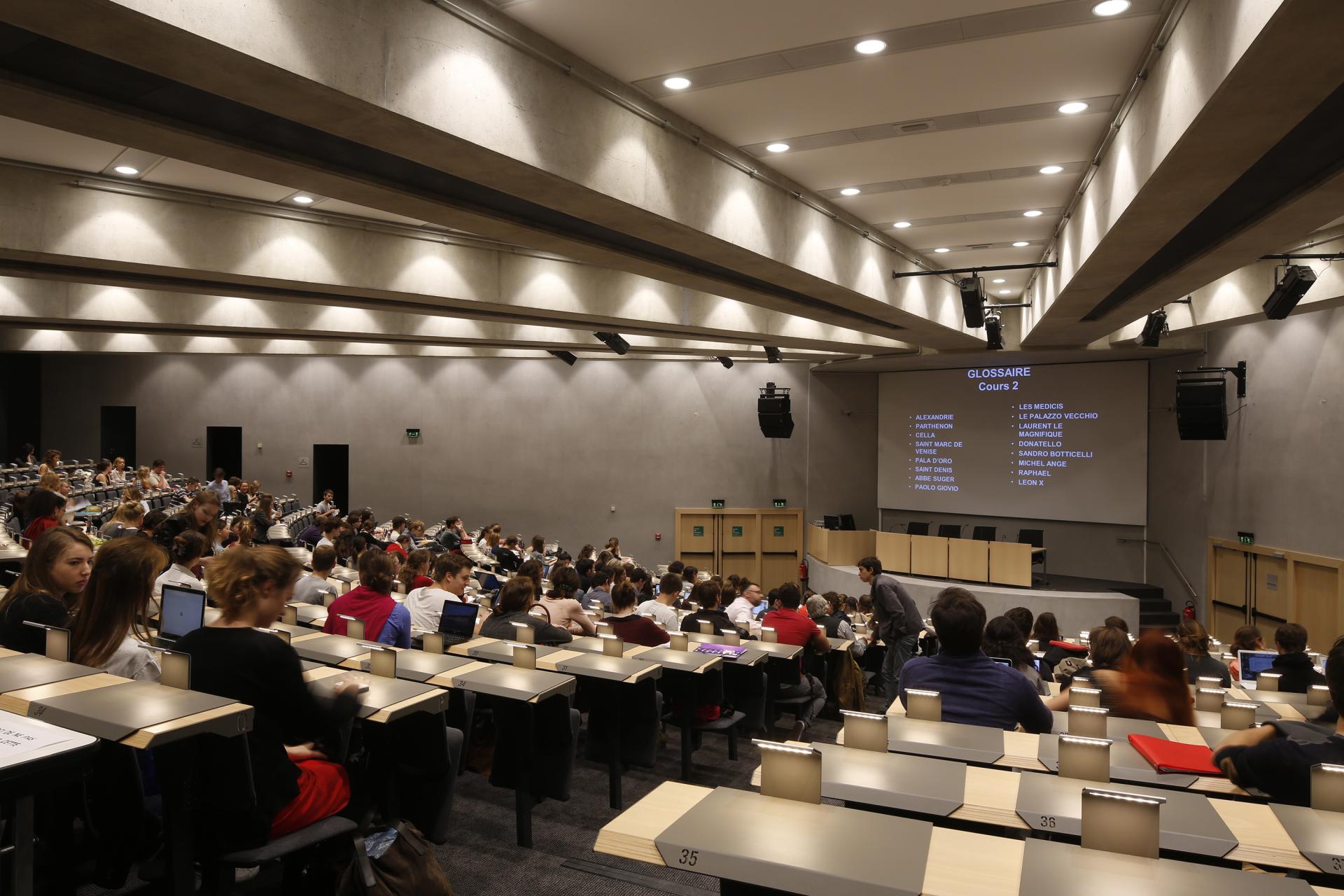
The first cycle of the École du Louvre
While French universities now encourage multi-disciplinarity during the first years of study, facilitating bridges between one discipline and another, the École du Louvre has chosen to focus its program on art history and archaeology, rooted in the material evidence of civilizations.
Founded on learning how to look at and relate directly to works of art, both in their history and in their materiality, the École's pedagogy actively stimulates memory (visual and textual), as well as reflection (comparative, contextual).


Introduction
The first cycle is an original combination of two modules: the first provides a comprehensive knowledge base in general art history, while the second offers a choice of specialties, from among the thirty or so offered by the École.
Over three years, the core curriculum successively addresses, in condensed form, all periods and continents through their artistic productions and civilizations. This is supplemented by an approach to creative techniques, the history of collections and iconography, modern languages and optional courses. In the third year, some courses are taught in foreign languages.
Teaching is based on the study of sites, buildings, works and objects conserved in heritage institutions. It is organized around two main modules:
- general courses, common core for all students;
- compulsory optional courses (specialty courses and modern language courses).
Admission and registration
Undergraduate entrance examination
Bank of literary tests
Equivalents
Continuing education
Common core
Core courses
Over three years, core courses are organized around general art history courses, which, according to chronological periods, cultural or geographical areas, provide a synthetic knowledge of the history of art, from its origins to the present day.
They include:
- general art history courses accompanied by tutorial sessions in front of the works;
- creative techniques courses;
- introductory iconography courses;
- collection history and introduction to museology courses;
- methodology courses (accompanied by tutorial groups in 1st and 2nd years).
3 classes of 1h30 per week
Tutorials in front of the works
General art history classes are supplemented by tutorials in front of the works; their pedagogical content is an integral part of the general art history teaching provided by the lectures.
They are organized in groups of 15 at museums and sites. The choice of tutorial groups made at the time of registration must be respected during visits, for reasons of security and museum rules.
2 to 3 TDOs of 2h00 per week
Compulsory optional courses
Modern languages
Courses in modern languages applied to art history (German, English, Spanish, French as a foreign language, Italian) are offered. The chosen language is retained throughout the first cycle.
20 sessions of 1h30 in 1st and 2nd years.
7 sessions of 2 hours in front of the works in 3rd year.
Specialty courses
Students are required to take at least one specialty course, chosen from the disciplines listed in the program.
Specialty courses consist of:
- organic courses;
- synthesis courses;
- practical work;
- sometimes seminars.
Thirty-one disciplines are offered to students. The final choice is made in the first year, no later than November 9, 2021. It determines the entire undergraduate specialization, and appears on the undergraduate diploma.
Students can register for a maximum of three specialty courses. However, materially, it is very difficult to take more than two and, in any case, the School cannot guarantee compatibility of timetables.
Only one specialty course is taken into account when calculating results.
Optional complementary courses
Courses in epigraphy, archaeological drawing, heraldry, iconography and numismatics can complement specialty courses. Each student has the option of enrolling in the complementary course of his or her choice. If the complementary course is related to the student's specialty course, the student will be able to transfer points above 10/20 from the complementary course to the student's specialty course.
Students wishing to have a course in epigraphy (related to their specialty), which they are taking at another establishment, validated must inform the pedagogical center when they register.
.

